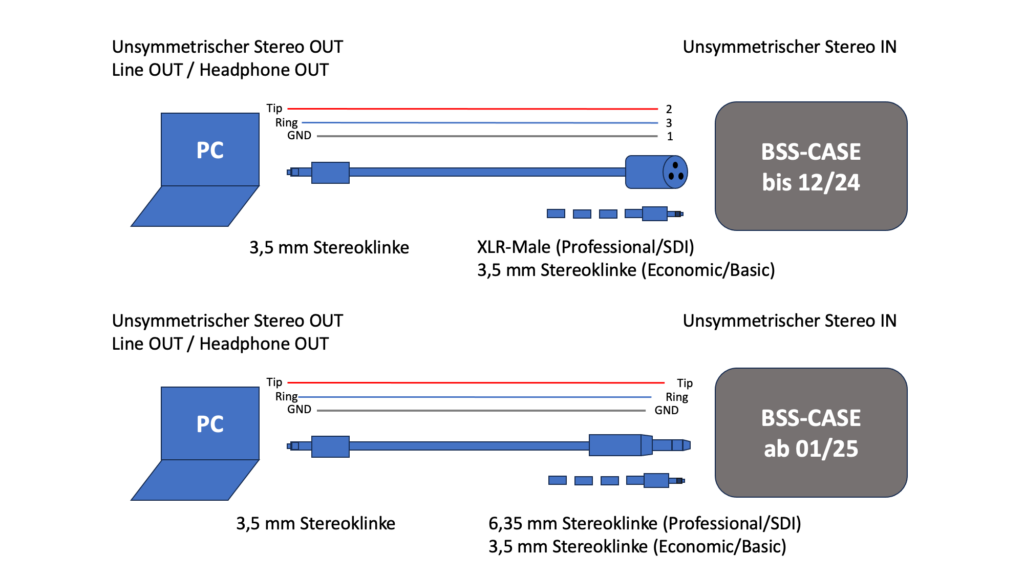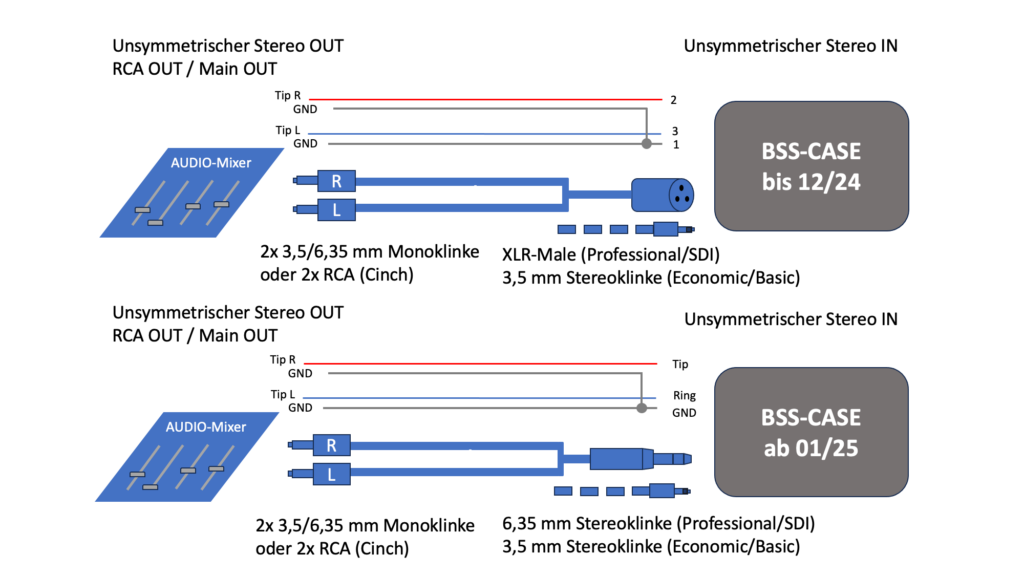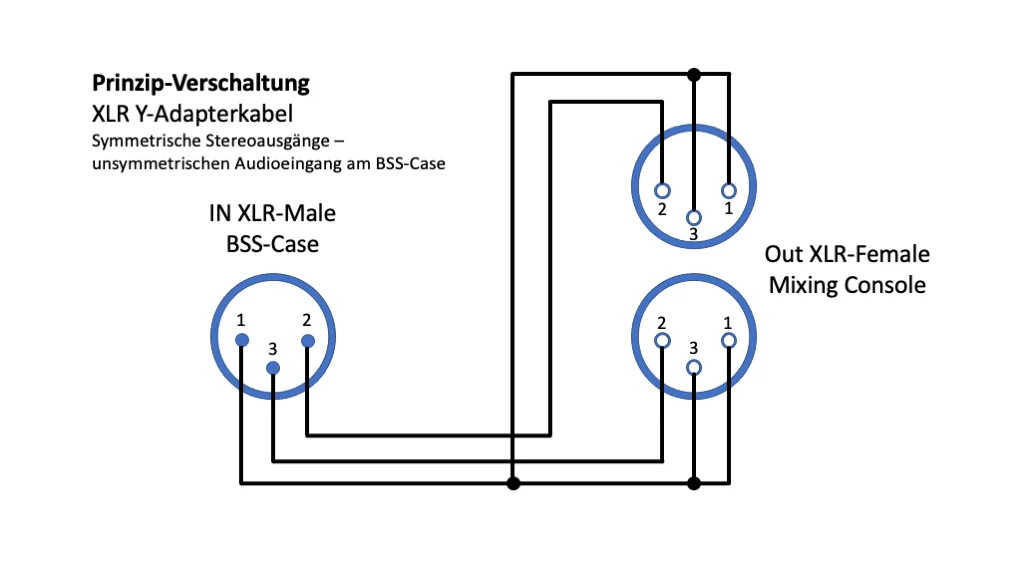Additional audio signals are connected to the case for the ATEM Mini via the two 3.5 mm or 6.35 mm jack sockets (depending on the case type). It should be noted that ATEM Mini can only process unbalancedaudio signals directly. These are, for example, signals that are output via RCA sockets or are also connected to PC headphone sockets.
It is not easy to connect balanced signals directly. These are typically used in microphones. Recognisable by the XLR sockets equipped with three pins.
The following is a list of different cable types with which the different signals can be connected to the case or the ATEM Mini/Extreme.
Connection of unbalanced audio sources
Connection principle with various audio adapter cables
The following diagram shows the connection of unbalancedaudio signals with two types of cables and their wiring diagram (from top to bottom).
- For cases until 12/2024:
Connect a stereo source (Line-OUT) to the BSS case with a stereo jack 3.5 mm to stereo jack 3.5 mm cable (Economic/Basic cases) or, analogously, with an XLR connector (for Professional or SDI cases). - For cases from 01/2025:
Connect a stereo source (Line-OUT) to the BSS case with a stereo jack 3.5 mm to stereo jack 3.5 mm cable (Economic/Basic cases) or, analogously, with a 6.35 mm stereo jack plug (for Professional or SDI cases).
These cables are directly contacted, without power bridges. They are suitable for connecting unbalancedstereo signals directly to the ATEM’s two AUDIO-IN inputs.

The following diagram shows the connection with two Y-cable types and their wiring diagram (from top to bottom). These cable types are suitable for connecting two mono sources (such as the main out of a mixer) to the ATEM audio input as a stereo sum. Please make sure that these outputs also provide unbalancedsignals.
Alternatively, if available, RCA (RCA) outputs can be used. In our experience, however, different manufacturers offer differently wired cable types (internally) (especially for the cable type with XLR connector). Unfortunately, this is not always evident from the description. Therefore, soldering knowledge and the appropriate (soldering) equipment are often helpful. 😉 Please refer to the wiring matrix below.
- For cases until 12/2024: Connect a stereo source (main-out or RCA-out) to the BSS case with a Y-jack 3.5/6.35 mm to XLR cable (for Professional or SDI cases).
- For cases from 01/2025: Connect a stereo source (main-out or RCA-out) to the BSS case with a Y-jack 3.5/6.35 mm to stereo jack 6.35 mm cable (for Economic/Basic cases) or analogously with a 6.35 mm stereo jack plug (for Professional or SDI cases).

In basic cases, a 3.5mm stereo jack plug is always installed on the right side of the cable.
Connection of balanced audio sources
To connect balanced audio sources such as microphones to the ATEM or case, we recommend using an audio mixer. In most cases, in addition to the balanced MAIN out, this also has unbalanced outputs for direct connection to the ATEM Mini/BSS case.
Another advantage of this solution is that condenser microphones can usually be supplied with the necessary 48V phantom power directly from the mixing console.
An alternative solution is the use of signal converters, which convert a balanced signal into an unbalanced one. These converters are available in different technical versions. Check out our blog “Audio Inputs on the Case for the ATEM Mini” for more information on how to use them.
Adapting balanced sources with special cables
For the Professional Cases up to 12/2024, the connection of balanced outputs (usually recognizable by the XLR sockets or/and the imprint “Balanced”) to a mixer can also be done via a corresponding adapter cable. This XLR Y-cable requires special internal wiring. For all those who like to solder themselves, you will find the circuit principle below. However, it is easier to purchase the right cable. Our recommendation for such a Y-cable is, for example, the Cordial EY 0.3 MFF elements.
This is not particularly long, but can be extended with an ordinary microphone cable.

Humming noises in the audio stream
Should humming noises occur in the stream during this circuitry, then this is most likely due to potential differences of the individual devices (a balancing current flows in between). Then ATEM Mini and the corresponding audio device (mixing console, etc.) must be galvanically decoupled from each other. All information can also be found in our blog “Audio inputs on the case for the ATEM Mini“
